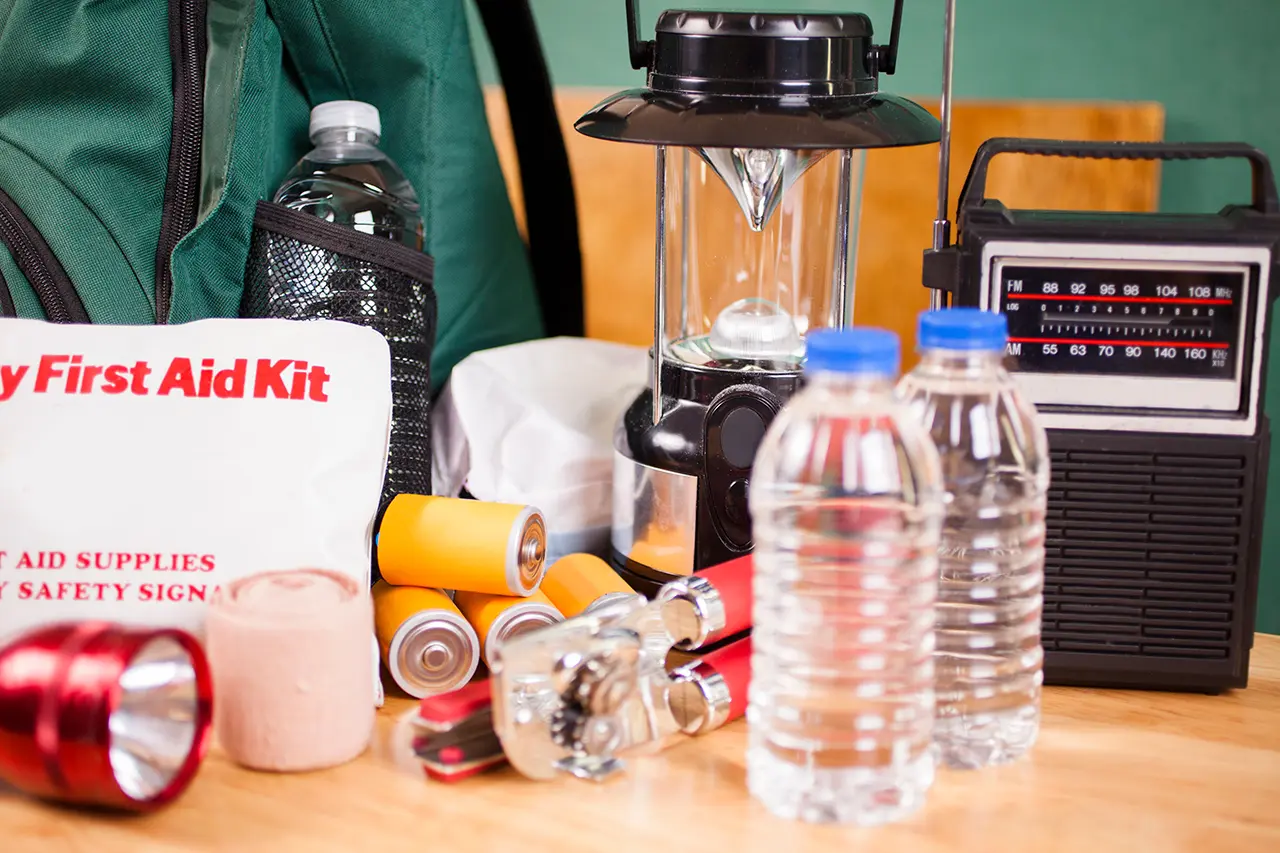
As we welcome each new year, it’s typical to think about making changes. There are many things we’d all like to do with our lives, and it’s a cultural tradition to frame them as New Year’s resolutions. The problem with that is the way resolutions tend to be forgotten before January is even over. As gun owners, it’s a great idea to plan for year-round changes by making resolutions that will improve our skills and make us safer, more responsible people. With that in mind, we’ve come up with 12 New Year’s resolutions for gun owners: one for each month to cover the entire coming year.
1. Get Training
This might seem obvious, but there is more to consider when you’re looking into a training class than simply the fact that it exists. For one thing, self-defense firearms skills degrade over time if you aren’t working on them, so it’s smart to train consistently. Also, training should be focused on a specific need and build on pre-existing skills. You cannot skip steps in firearms training; without a proper foundation, you’ll never execute advanced skills well.
Take the time to vet your instructor. All firearms instructors are not created equally. They should have a resume of training that extends beyond a background in the military or law enforcement. Talk to past students. Read reviews. Ask experienced shooters what and/or who they recommend. Training can get expensive, so it’s worth your time to be sure it’s safe, effective, and fits your needs.
2. Learn to Clean Your Gun
It is always a good idea to keep your firearm lubed and clean it as necessary, so you can inspect it for wear and tear. It’s also wise to know how your gun works, including what the various parts are and where they are located. How your gun works should not be a mystery to you.
3. Find and Install a Quality Gun Safe
If you don’t have a gun safe, strongly consider getting one; if you do have a safe, take a moment to ensure it’s properly installed and consider whether you’d benefit from a higher-quality model. Safe storage is part of your responsibility as a gun owner and, depending on where you are and whether you have children in the home, it may be required of you by law. Remember, your nightstand is not a gun safe, and neither is your vehicle. Staging a firearm in your nightstand drawer for defensive use overnight is not the same thing as leaving it there for unsecured storage and it’s generally good practice not to leave your firearm accessible to others. Even if all you can manage right now is the simplest of safes, consider getting one.
4. Inspect Your Gear
It’s easy to forget that belts, holsters, and other gun-related gear don’t last forever. They crease, crack, bend, and eventually break, so you should be inspecting your gear periodically. A good example of this type of wear is the way the leather backing of hybrid holsters may tend to fold over with use and their plastic, including Kydex®, shells can eventually crack and separate from the backing itself. Whatever type of holster you use, you should be watching for signs it is no longer safe or effective to use. These inspections should extend to your eye and ear protection, target stands, gloves, etc. Bottom line: If you use it for carry, range time, or training, you should be checking it out for signs it ought to be replaced.
5. Read a Book (or an Article)
Yes, really. There are a lot of excellent books out there written by experienced shooters. Whether you’re interested in the mental aspects of self-defense, analysis of self-defense shootings, handgun hunting, or use of force, there’s a book for you. Even if it takes you all year to get through a book, it’s worth it. One of the great things about the gun world is that there’s always something to learn. Broaden your horizons by spending some time on gun-related books and articles.
6. Try a New-to-You Shooting Style
Are you married to the Isosceles Stance? Do you think Weaver and Chapman stances are only for the older generation of shooters? Maybe you only shoot thumbs-forward; maybe you only shoot thumbs-down. If your foundation skills are solid, it can be a good idea to mix things up by learning a new shooting stance or grip. Being adaptable and having multiple skills in your tactical toolbox are helpful for you as someone focused on self-defense. This comes down to the don’t-knock-it-till-you-try-it school of thought. If it’s safe and recommended by respected sources, it might be worth a shot (pun intended). Conversely, if it’s questionable in nature and involves breaking one or more of the four rules of gun safety to get it done, don’t do it.
7. Dry Fire Training
Learning to do dry fire training and then practicing it consistently throughout the year can and will improve your shooting skills more than you might think (the fact that it saves a lot of money to train without live fire is an added bonus). If you’re going to get into dry fire training, you’ll need a safe training space with a good backstop—because accidents can happen—that is free from live ammunition. You can dry fire with no ammunition at all, with dummy rounds, or with a laser training system. Continue to follow the four rules of gun safety as you train. For example, your cat is not a suitable or smart target. Take it seriously.
8. Leave Your Caliber Comfort Zone
Maybe you’ve always been told micro pistols chambered in .380 ACP are easier to handle than “bigger” guns; perhaps you love 9mm and never considered trying something else. Why not get your hands on calibers you’ve never used before? Many gun ranges offer rental firearms, and odds are you probably have friends who can help you responsibly explore other calibers. This doesn’t mean you have to go all-out and track down a rifle in .375 Holland & Holland Magnum—although they may be fun—but simply to suggest you get out of your comfort zone. If your skills with your caliber of choice are on point, why not try something new?
9. Consider Self-Defense Coverage
We’re not saying this just because we are U.S. LawShield®; we’re saying it because it’s important. Having Legal Defense for Self Defense® coverage is a vital part of being a responsible, prepared gun owner. Coverage with U.S. LawShield gives you peace of mind and access to experienced legal minds for self-defense and firearms law questions. To check out our coverage, click here.
10. Try a Different Type of Gun
Just like expanding your caliber horizons, you may benefit from lawfully shooting more than one type of gun. If you stick to handguns, spend some time on long guns; if you’re more comfortable with an AR-15 than anything else, this is your year to get some solid handgun skills. There’s a whole wide world of guns out there. Don’t lose out on fantastic and cool experiences by refusing to responsibly try a new gun.
11. Give the Gift of Gun Knowledge
Treat someone you know to an awesome gun class. Buy a shooter a gift card to a nice gun store so they can get a new holster. Teach your kids to be safe shooters. The only way gun knowledge goes on is if we pass it on.
12. Fight for Second Amendment Rights
The Second Amendment states: “A well regulated Militia, being necessary to the security of a free State, the right of the people to keep and bear Arms, shall not be infringed.”
There are large and small ways you can support gun rights. Don’t simply sit on the sidelines and hope someone else does the work for you. Take the time to volunteer your time or donate to worthwhile Second Amendment causes, call your legislators, or get involved in advocacy or politics on a local level. Being a responsible, law-abiding gun owner is also part of supporting gun rights. If you’re unsure where to start, check out groups like Gun Owners of America and the Second Amendment Foundation for ideas.
What are some of your gun-related New Year’s resolutions? Tell us about them in the comments below.
The information provided in this publication is intended to provide general information to individuals and is not legal advice. The information included in this publication may not be quoted or referred to in any other publication without the prior written consent of U.S. LawShield, to be given or withheld at our discretion. The information is not a substitute for, and does not replace the advice or representation of a licensed attorney. We strive to ensure the information included in this publication is accurate and current, however, no claim is made to the accuracy of the information and we are not responsible for any consequences that may result from the use of information in this publication. The use of this publication does not create an attorney-client relationship between U.S. LawShield, any independent program attorney, and any individual.





GREAT RESOLUTIONS to be added to eat healthier and exercise!
Thanks. Happy New Year.
Is my account still current
Dwight, please call member services at 877-448-6839 and we’ll be happy to assist you.
Good rules, and I would expect that most gun owners abide by them. We have a problem with drugs and common sense that some owner of weapons with children in the home do not adhere to. Leaving a child in a car in the summer months while you shop, has killed many children and still continues every year. The same thing happens with guns that are not kept in a safe place away from children.
Excellent list.
Thanks for reading!
Thanks, you brought up some great ideas for me.
Thanks for reading!
Training is on my list this year as well as fitness, thanks for the great article.
Thanks for reading!
Thanks for the great article. Training is at the top of my list
Thanks for reading!